I desire to learn about "estimating the poles of a resonant signal", specifically the complex natural resonance of objects.
However, I don't know what "poles" are. What would you suggest I look up for better resources? :)
I desire to learn about "estimating the poles of a resonant signal", specifically the complex natural resonance of objects.
However, I don't know what "poles" are. What would you suggest I look up for better resources? :)
First of all, signals don't have "poles", systems do.
The transfer function of a system in many cases can be expressed as a ratio of two polynomials.
$$G(s) = \frac{A_ms^m + A_{m-1}s^{m-1} + ... + A_1s + A_0}{B_ns^n + B_{n-1}s^{n-1} + ... + B_1s + B_0}$$
There are values of \$s\$ for which the upper polynomial evaluates to zero. When that happens, the value of \$G(s)\$ must be zero, regardless of the value of the lower polynomial. These values of \$s\$ — the roots of that polynomial — are referred to as "zeros" of the transfer function.
Similarly, there are values of \$s\$ for which the lower polynomial evaluates to zero. When that happens, the value of \$G(s)\$ goes to infinity, regardless of the value of the upper polynomial. These values of \$s\$ — the roots of that polynomial — are referred to as "poles" of the transfer function.
We sometimes imagine the response of the system — the values of \$G(s)\$ — as a "rubber sheet" that is stretched over the \$s\$ plane. The "zeros" of the transfer function are the places where that sheet is stuck to the \$s\$ plane, and the "poles" are frequencies where the sheet is pushed up by an infinitely tall pole, which is where the term comes from. In between, the sheet finds intermediate values that are determined mostly by the poles and zeros that are nearest to it.
Here's an example of such a visualization:
